REVIEW – The first thing that came to mind when I saw that Anker had come out with a power station was, “It’s about time!” I mean seriously, Anker has been at the forefront of small to mid-sized power backups that I and many others have used and trusted for … ever. Over the past few years, Anker has amped up the size and capabilities of their power units to the point that they challenge the big boys in this field. Now, with Anker’s new 757 PowerHouse Portable Power Station added to the mix, we truly are entering a golden age of power stations.
What is it?
At 1500 watts (1229 Wh) of power, the Anker 757 PowerHouse Portable Power Station is Anker’s most powerful battery charging station to date. It uses LFP (LifePO4) batteries as opposed to the older Lithium-ion batteries currently found in the majority of power stations. I will get into the pros and cons of LFP batteries in the review.
It measures 18.2 x 11.3 x 9.3 in. and weighs in at a whopping 43.9 lbs. The power station is housed in an aluminum frame for durability and temp control. The PowerHouse will charge to 80% capacity in only one hour (1.5 hrs. to 100%). Two handles grace each end for carrying.
Specs
- Capacity: 1229Wh
- AC Outputs: 6
- Power Surge: 2400W
- USB-A Output: 4 (12W)
- USB-C Output: 2 (100W and 60W)
- Car Socket Output: 120W
- AC Input: 1000W
- Solar Panel Input: 300W Max
- Recharge Time: 1 Hour to 80%, 1.5 Hours to 100%
- Solar Recharge Time: 3.6 hours to 80%
- Weight: 43.9 lb
- Dimensions: 18.2 x 11.3 x 9.3 in
Design and features
With the 757, Anker didn’t just make a power station. Anker made a power station that doesn’t mind being seen. This is by far the best-looking power station Anker has made. Its attention to design reminds me of the Generark HomePower 2.
However, the 757 is not just about beauty. It has some serious brawn to back it up. Its 1229 Wh can power important stuff during power outages or long camping trips. It can handle power surges to 2400 watts, meaning appliances that draw more energy when cycling up (like a home refrigerator) can be easily powered by the 757.
Here are some examples of how long or how many times the Anker 757 PowerHouse portable sower station can charge a device:
- Smartphone: 97 times
- Laptop: 16 times
- 35-watt fan: 28 hours
The 757’s front panel sports many charging ports—more than some other even-more powerful power stations. There are four 12-watt USB A ports. These are legacy ports that can power just about anything. Anker also included two USB-C ports—60W and 100W with what Anker calls smart IQ technology which offers faster charging.
I did notice how much faster the 100W USB-C port is compared to our wall outlet USB-C port. Actually, it was no comparison! The Anker port blew it away. A small Scosche power bank I’m currently testing charged twice as fast using a USB-C port on the 757 power station vs. the USB-C wall outlet.
Along with the usual 12V “cigarette lighter” car charger port, there are six AC outlets. The 757 can power many devices—all at the same time.
Activating the 757’s “Power Saving” switch does what its name implies: it allows the power station to shut down once all connected devices are fully charged. However, Power Saving can also be turned off for C-Pap machines or other devices that must remain charged at all times.
The Anker 757 PowerHouse has a simple, but effective LED display. The numbers and other info are easy to read. It shows the usual info, such as the percentage of battery life remaining and how many watts are being drawn at any given time. The 757 also tells you how many hours it thinks are left using a device or appliance. Other, smaller icons reveal power-saving, high and low temp alerts, which port is in use (although that’s easy to see by just looking at the connected cables), 50 or 60 Hz AC output frequency, and input/output power. Note that the AC frequency can be switched to 50 or 60 Hz by pressing the AC port button for 2 sec.
If the continuous power draw of the connected devices exceeds the 1500-watt limit, the 757 will simply shut down without harming the unit. However, the 757 can easily handle over 1500-watt surges.
One cool feature is a built-in light bar that sits above the LED window and runs the length of the power station. Its three levels of brightness are not the brightest I’ve seen, but it’s better than nothing and can help light up dark spaces when no power is available.
The rear of the 757 houses input ports for solar and AC. There is no external power brick, so the 757 only needs a standard power cord. Anker uses what they call “HyperFlash Technology” to charge the 757 from 0% to 80% in only one hour. Of course, the extra time required to reach 100% can be a few hours, but 80% can get you out of a jam quickly!
While a solar charging cable is included, solar panels are not. Anker does offer the 100W 625 Solar panels that work with the 757. In fact, you can connect up to three panels giving you a total of 300W of charging from the sun (providing the sun is shining, of course).
Despite the multitude of useful ports and speedy charging, what is more impressive are the type of batteries Anker uses in the 757. This gets a bit geeky, so please bear with me. Where the majority of power stations rely on Lithium-ion batteries, the 757 uses LFP (LifePO4) batteries. The main disadvantage of LFP batteries is their weight. The 757 weighs about 10 lbs more than it would if it used Lithium-ion batteries. But the advantages far outweigh (pun intended) the disadvantages.
LFP (LifePO4) batteries are inherently safer. The ugly secret about lithium-ion is that without built-in safety measures, Li-ion batteries can overheat and catch fire. LFP batteries do not. Then there are the life cycles.
A battery’s life cycle is rated at how many times a battery can be drained and re-charged until it will only recharge to 80% of its original specs. Li-ion batteries typically have life cycles of 500. Simply put, if you drained and fully charged a Li-ion battery each day, it would last a bit over 1.5 years before it would only charge to 80%. The LFP battery used in the Anker 757 is rated at 3,000 life cycles. Do the math. That’s over 8 years of daily use. Battery technology is amazing. Who knows what it will be like in 8 years!
Even with its weight, the Anker 757 PowerHouse power station is what its name says—portable. It can be carried room to room (or carried around a campsite) with relative ease. The two handles are balanced, so it can be carried either using both handles or even a single handle—if a bit more awkward. The top is flat making it easy to stack with other items or boxes. Unfortunately, the flat top does not have wireless charging capabilities.
What I like
- Attractive design
- Useful LSD display
- Many useful ports
- Long warranty
What I’d change
- Expensive
- No built-in wireless charging
Final Thoughts
I’m impressed with the Anker 757 PowerHouse Power Station—not so much for its abilities, but its ability to do it in style and using a safer and much longer-lasting technology. Power stations are not supposed to look this good, but I’m glad when they do. And if that’s not impressive enough, it comes with a 5-year warranty.
Price: $1,399 US
Where to buy: Anker and Amazon
Source: The sample of this product was provided by Anker.

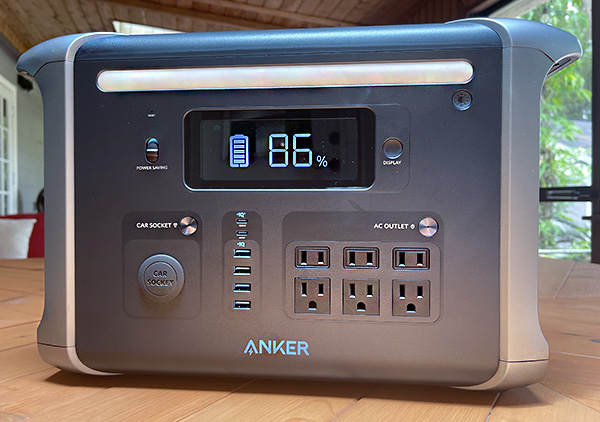
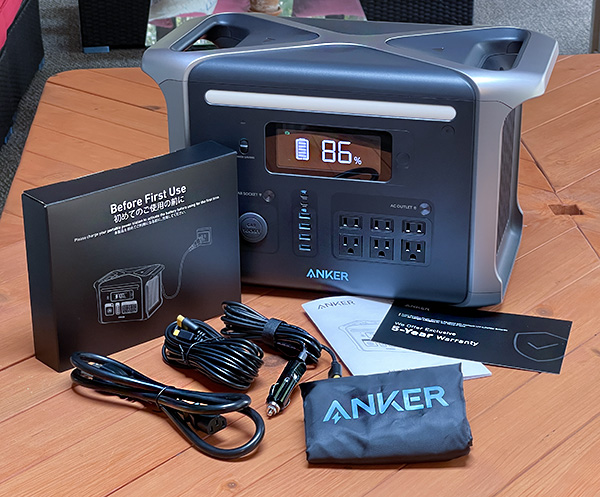
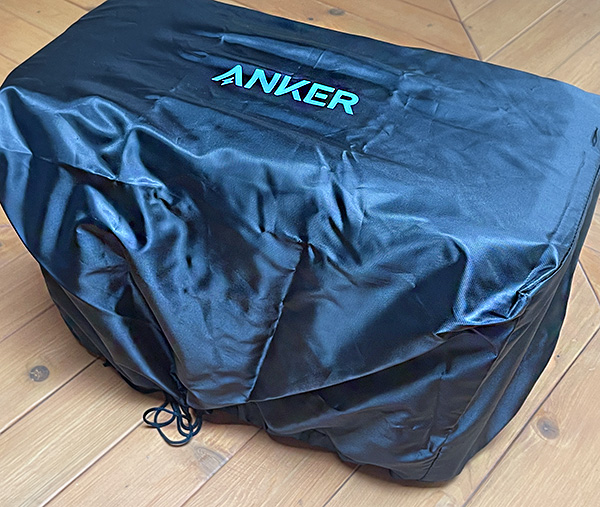
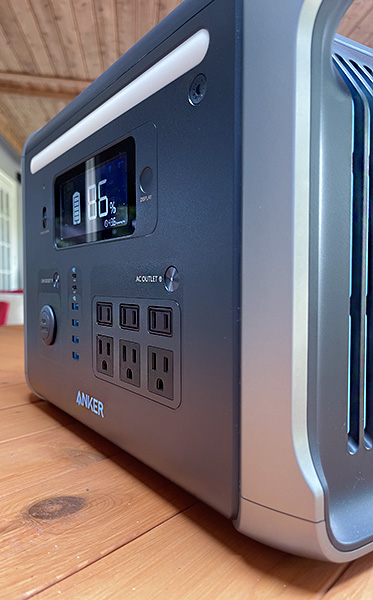
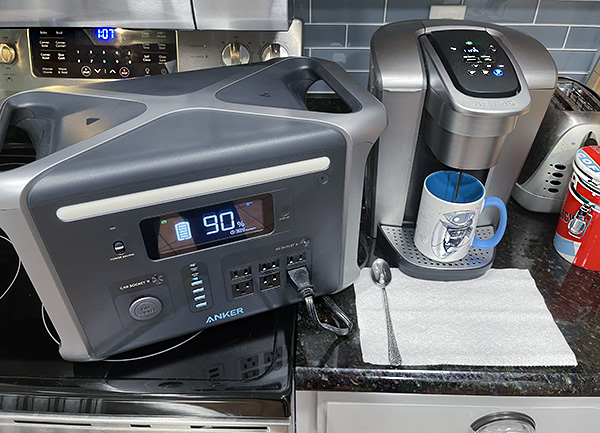
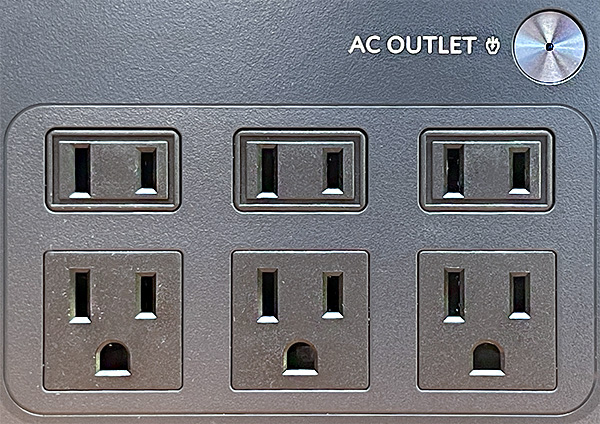
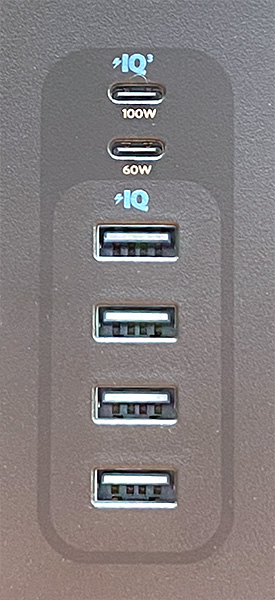

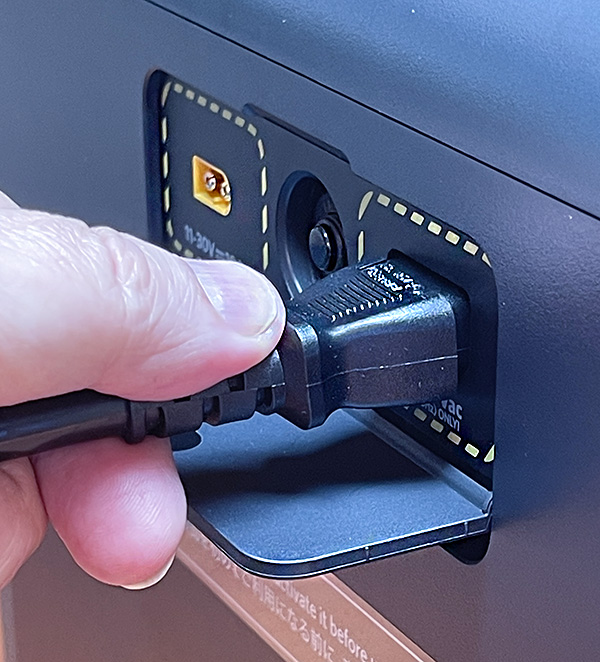
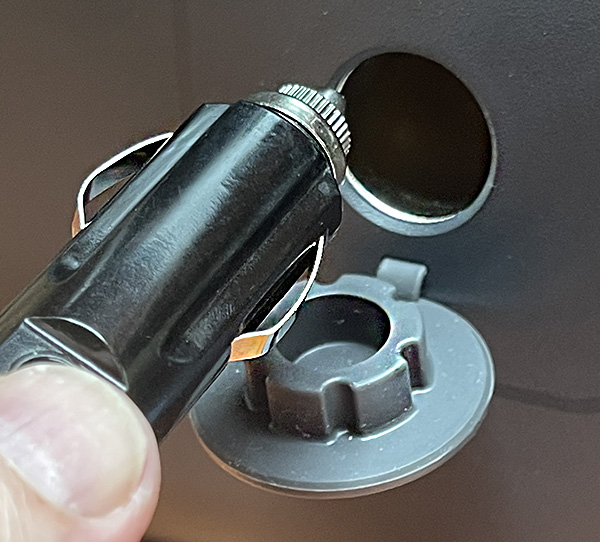
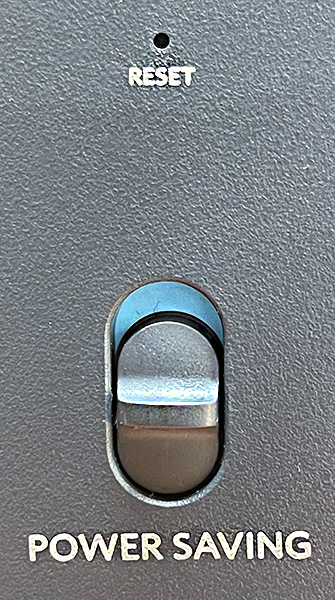
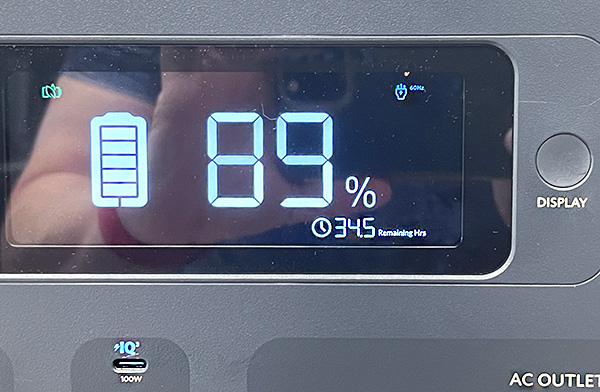
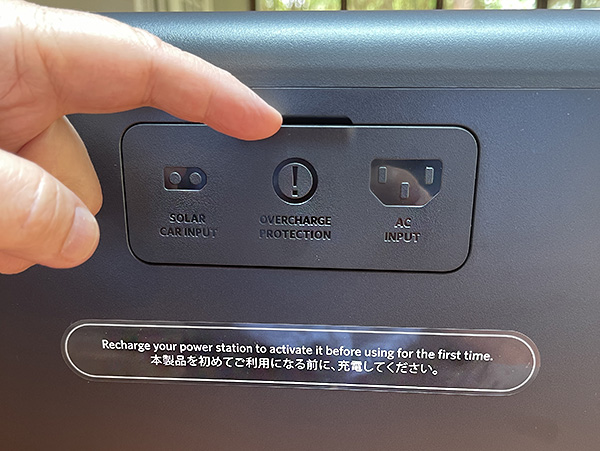
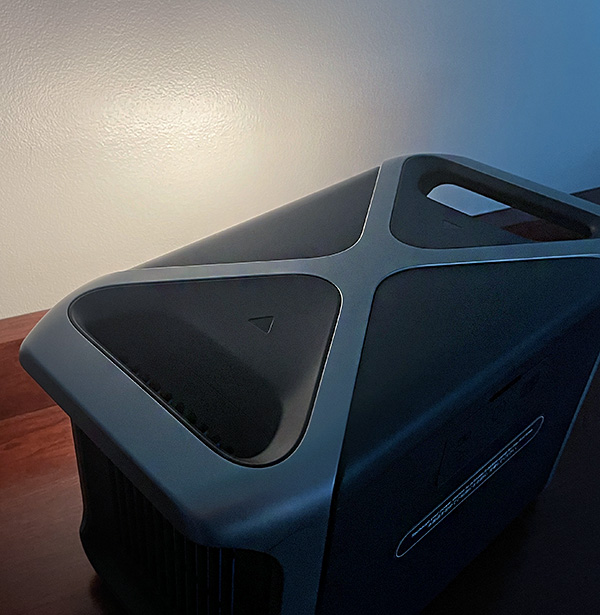
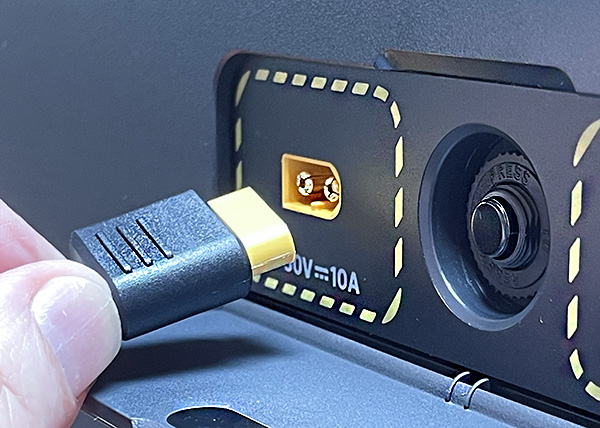
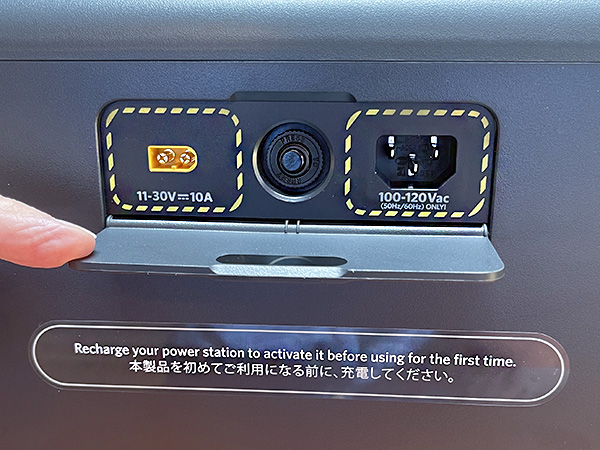
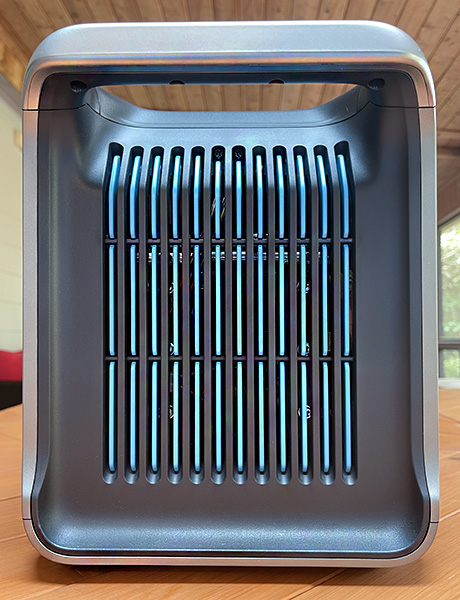
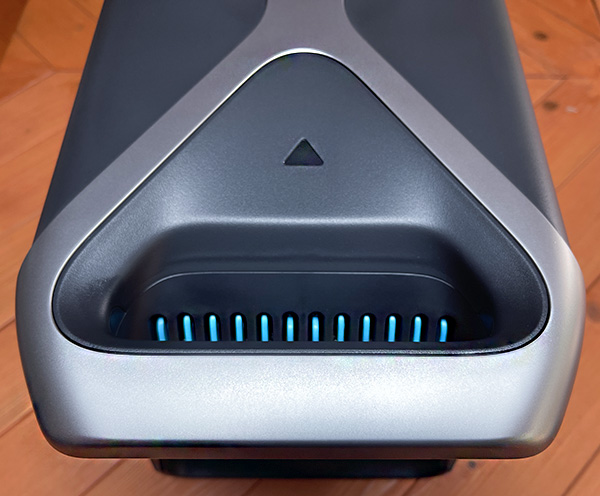

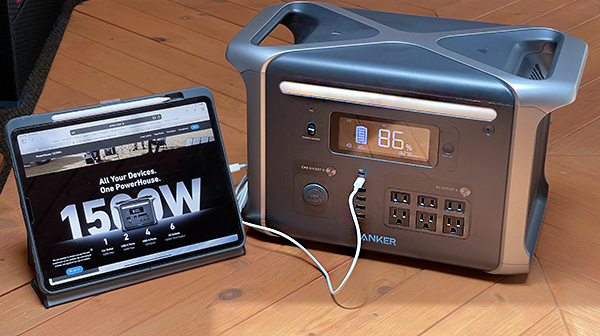


Gadgeteer Comment Policy - Please read before commenting
What is with all the USB-A ports? I’m no techie that runs out and buys the latest model when something new comes up, but I don’t have a single gadget that doesn’t use USB-C. Phone, tablet, laptop, flashlight, lantern, makeup mirror–all use C. (OK, unlikely I’d be using the mirror in a power outage much less camping, and it’s totally stupid it doesn’t have a regular wall plug–who does their makeup next to their computer anyway??? or at all since COVID …) I’d much rather have had 4 Cs and 2 As. When they come out with that model, I’m totally in.
You can buy a automobile adapter (of any configuration) to have up to two USB ports for the Anker to get the additional utility you seek
Speaking of CPAPs, how would one know whether a battery powered power station like this one has sufficient power for keeping a CPAP running all night?
Hi Matt,
The Anker is a 1229 watt hour station If you sleep for 8 hours, that means the CPAP machine cannot be more than 153 watts. Most CPAPs are between 30-60 watts. So you are more than covered for an 8 hour night.
I read on another forum, that a typical CPAP-machine uses around 30% of the battery every night, if charged over AC. If it’s DC, it’s probably only 20%.